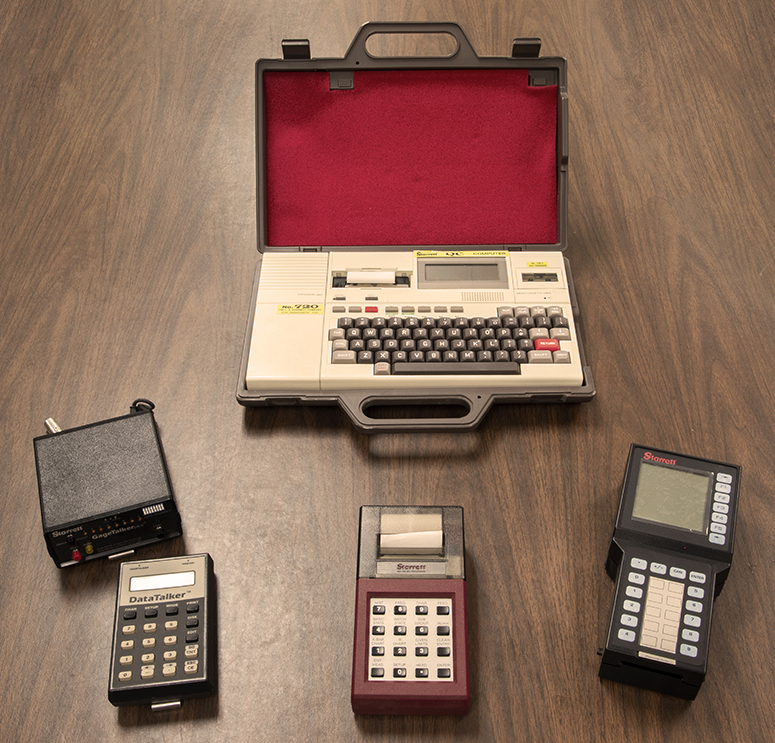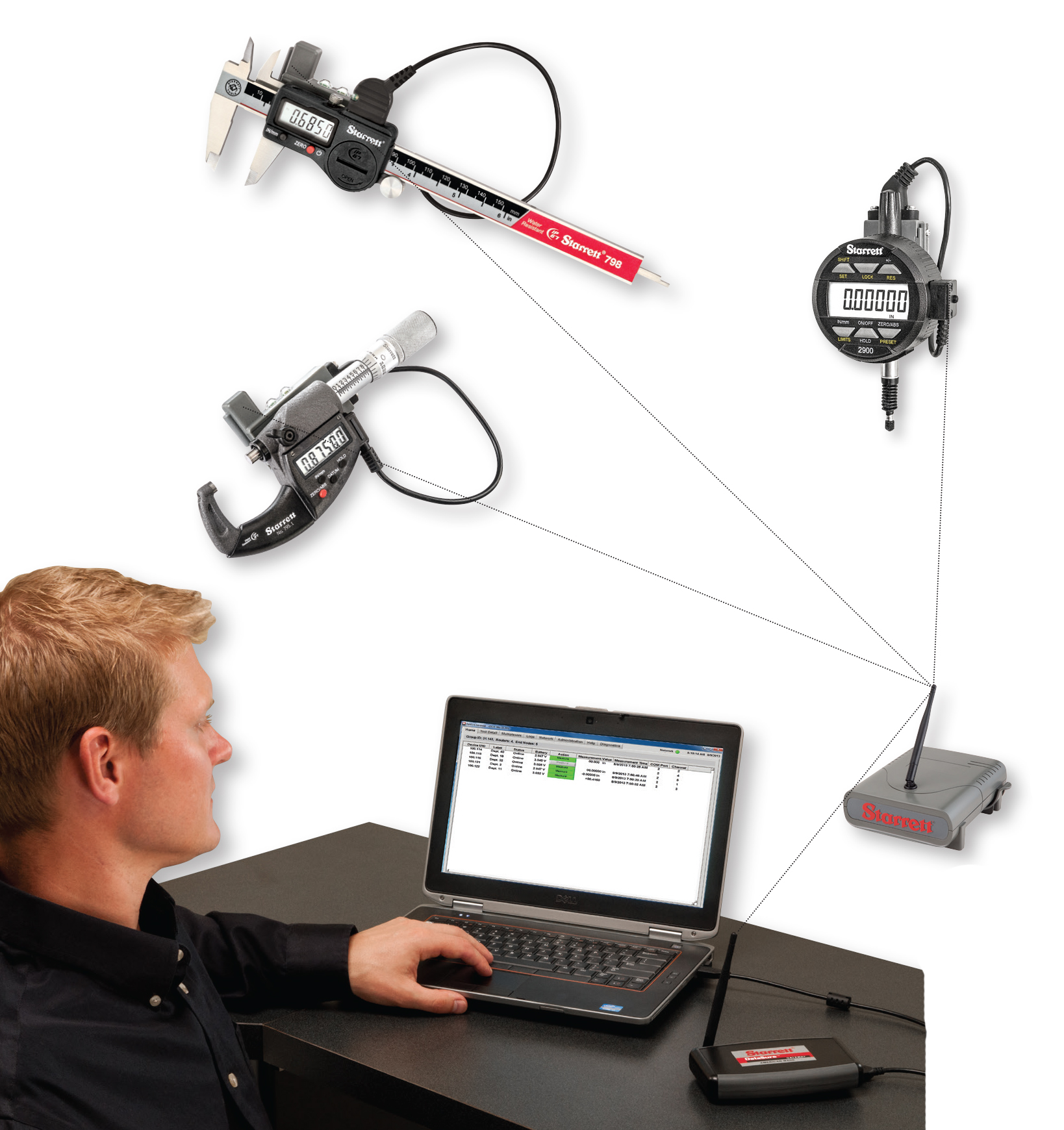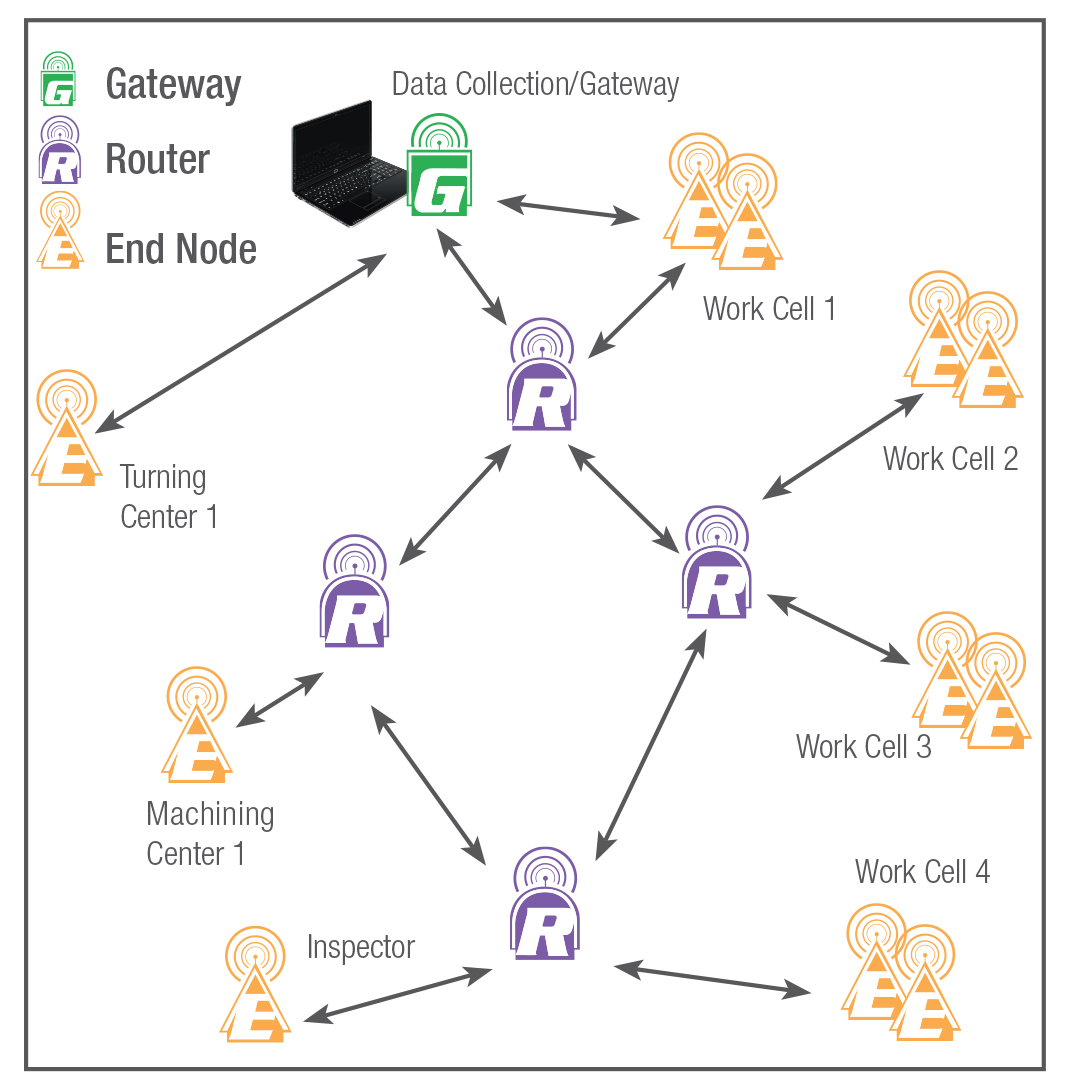STARRETT NEWS & EVENTS
Automatic, Wireless Measurement Data Collection Today is Easier, Faster, More Powerful
“When wireless is perfectly applied the whole earth will be converted into a huge brain, which in fact it is, all things being particles of a real and rhythmic whole."
-Nikola Tesla (1926)
When quoted in 1926, this may have seemed far-fetched. However, today one only needs to look at their own smart phone to be reminded that wireless technology is here in our daily lives and is the facilitator of many types of productive applications. This includes improving the efficiency of collecting and transmitting data in a manufacturing environment.
Industry 4.0 and Overall Equipment Effectiveness (OEE) initiatives demand having accurate, up-to-date data across the entire organization, including measurement and test information collected from quality labs and directly from the shop floor. Collecting data automatically and without cumbersome wires are well known advantages.
Manufacturers needing data to measure application variables are well served to use the most accurate & efficient data collection system (DCS). However, early on and even for some manufacturing operations today, data collection is overlooked or done manually, written down. Besides being a slow process, the possibility of error by collecting and transferring data this way is high. As technology has progressed and with the birth of PC's, measurements can be entered into computers. Yet, due to data entry mistakes, errors can still not be prevented by transferring data this way. With wireless DCS, measurements can be taken, and with a press of a button the data is sent directly to the PC. Error in collecting data is no more.
Data collection back in the day. These earlier devices/ methods were used for acquiring measurement data. | Looking Back Around the 1980's, automated data collection got a rudimentary, yet important start. The first generation of DCS required wires and was bulky, slow, and not user friendly. A micro cassette drive using magnetic recording was used to store data in a computerized device. This initial solution had the ability to read data from only a few tools. Over time, the device was improved and data inputs could be made through a 16-key sealed keyboard or directly from any SPC (Statistical Process Control) electronic tools. This made collecting basic statistics, histograms, frequency reports, range charts, among other charts/reports, faster. Even a foot pedal option was available for hands free data collecting. A portable device was next in line for DCS advancement. The device stored measurements and processes for SPC analysis. With a memory of 32K bytes it could input 1-4 tools, printing the data out to a 32 or 80 column printer. It provided sophisticated SPC data output in mathematical and chart form on a printer. Still, only 1-4 tools could connect, and they needed to be hard wired. As DCS continued to advance, portable solutions came on the scene with the ability to connect a greater number of tools, and were compatible with a range of tool brands by using a plug in module. Portable solutions evolved and were increasingly
more rugged and lightweight, making shop use desirable. The simple, automatic teller machine (ATM) style operation could be mastered at any level, from the experienced technician to new operators. |
Starrett DataSure® Wireless DCS connects and manages your tools, network, data and third party SPC applications. | Eliminating the Wires - Today's Data Collection Systems In the early 2000's, DCS took a significant leap forward with wireless data collection solutions, greatly improving the ease of collecting and storing data by enabling the monitoring of a wireless network, tools, system status, and tool measurement all from one screen. At the onset, radio backpacks were used to collect data from precision measurement tools, but were considered difficult to assemble and were not waterproof such as some of the tools they were connected to. This prompted new end node designs that were easier to assemble, more cost-effective to manufacture and waterproof to an IP67 rating. Additional enhancements have included improved performance and battery life as well as the addition of DDE (Dynamic Data Exchange), Remote Client over TCP/IP (Transmission Control Protocol/Internet Protocol), support for multiple languages, and drag and drop virtual multiplexer support for easy configuration of tools and work cells. Today's wireless DCS solutions provide real-time, 100% error-free data collection. From simple installations to systems covering thousands of square feet, data is collected and analyzed much faster. Transmission users receive confirmation at the tool. With the elimination of cumbersome and expensive data cables, precision measuring tools can be brought to the work, rather than bringing the work to the tool. |
| End node radios can now store readings at the tool end in the event that the main system is down or busy, and a base system handles hundreds of tools, with 25 to 40 tools in a typical installation. Each radio's range is approximately 65' and adding routers can increase the range in 100' increments. A multi-mode software feature allows one tool to be connected to a gateway for simple installations, or up to 20 multiplexers and 100 tools for complex shop environments. Users today can expect to work seamlessly with all major SPC software programs, and now data collection systems support nearly all handheld metrology tools with a serial output connection. Solutions are built for rugged durability with end nodes, routers and gateways that perform reliably in almost any environment, such as in the harsh and demanding ambient conditions often found on the shop floor. The illustration to the left demonstrates how a large, multi-workstation shop might be networked with Starrett DataSure® Wireless DCS. Tools at various locations collect data. The End Nodes send data to the nearest Router, and then to the Gateway, or directly to the Gateway if that is the best path. The Gateway sends a signal back through the same path to the End Node to confirm receipt of the data. |
Wireless Data Collection in the Future
Manufacturers can expect DCS enhancements to continue. By embedding radio technology, a radio backpack on the measuring tool for data transfer within a defined range will no longer be required. For longer data range transmission, backpack radios and multiple remote gateways will enable a range of up to miles of coverage. Data that needs to go from the shop floor to possibly another part of the complex (QC lab) or company location (range specific) will be possible. Gateways and routers will be smaller in size,and rechargeable end nodes will eliminate the need for battery replacements, creating a lower lifetime cost. New advances in multimode radios will allow tools from different manufacturers to all talk to one system. Security risks will be circumvented through powerful encryption and system architecture choices. Mobile computer platforms will facilitate even more flexible applications use for DCS and tools.
Very high-speed connections of <50ms data travel time will also be possible. New DCS solutions will be compatible with Apple and Android mobile phones, and tablets, laptops and computers.
Next generation systems must seamlessly interface with enterprise middleware for the Industrial Internet of Things/Industry 4.0 while allowing operators to do their jobs unencumbered. Measuring, collecting and storing data for analysis and reports in the digital age will continue to become faster and more automated to meet the demands of Industry 4.0 and beyond.
A Study on Data Collection Throughput and Accuracy
In a controlled, 100% inspection test to measure the impact of Starrett DataSure® on throughput and quality assurance, Starrett made three measurements per part and recorded the data on 500 parts.
Methods 1 and 2 involve time-consuming hand movements to pickup and put down the tool in order to record data. Also, results can be uncertain due to the measurement value changing while being inspected. The slowest method (#1) required 29 seconds per part with many errors. Measurement with DataSure wireless data collection software is fast and direct, nearly 5 times faster than Method 1.
Method 1: Measure, Handwrite Results, Enter Data Remotely
Factors affecting accuracy and throughput:
| 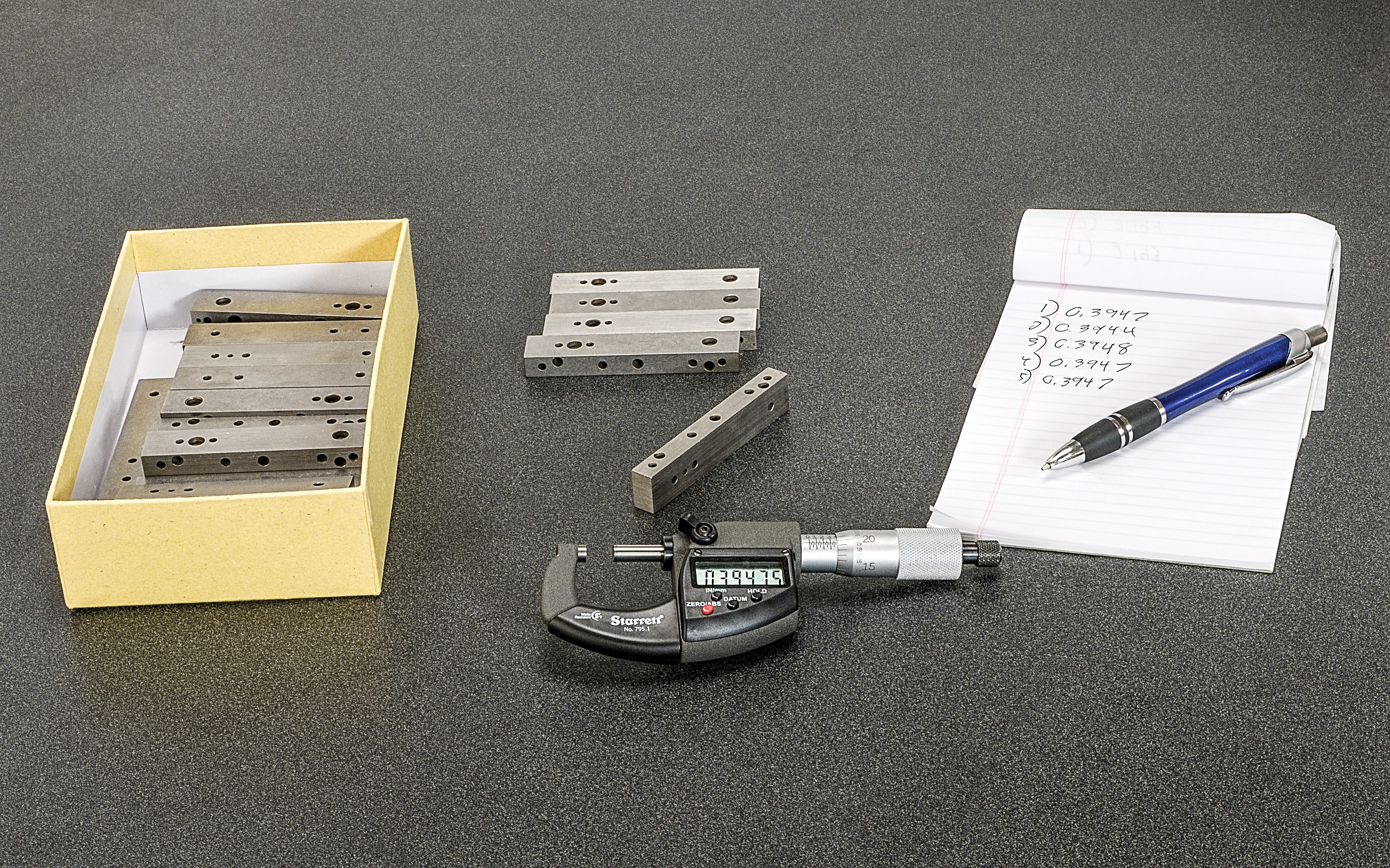 |
Method 2: Measure and Enter Results to PC
Factors affecting accuracy and throughput:
| 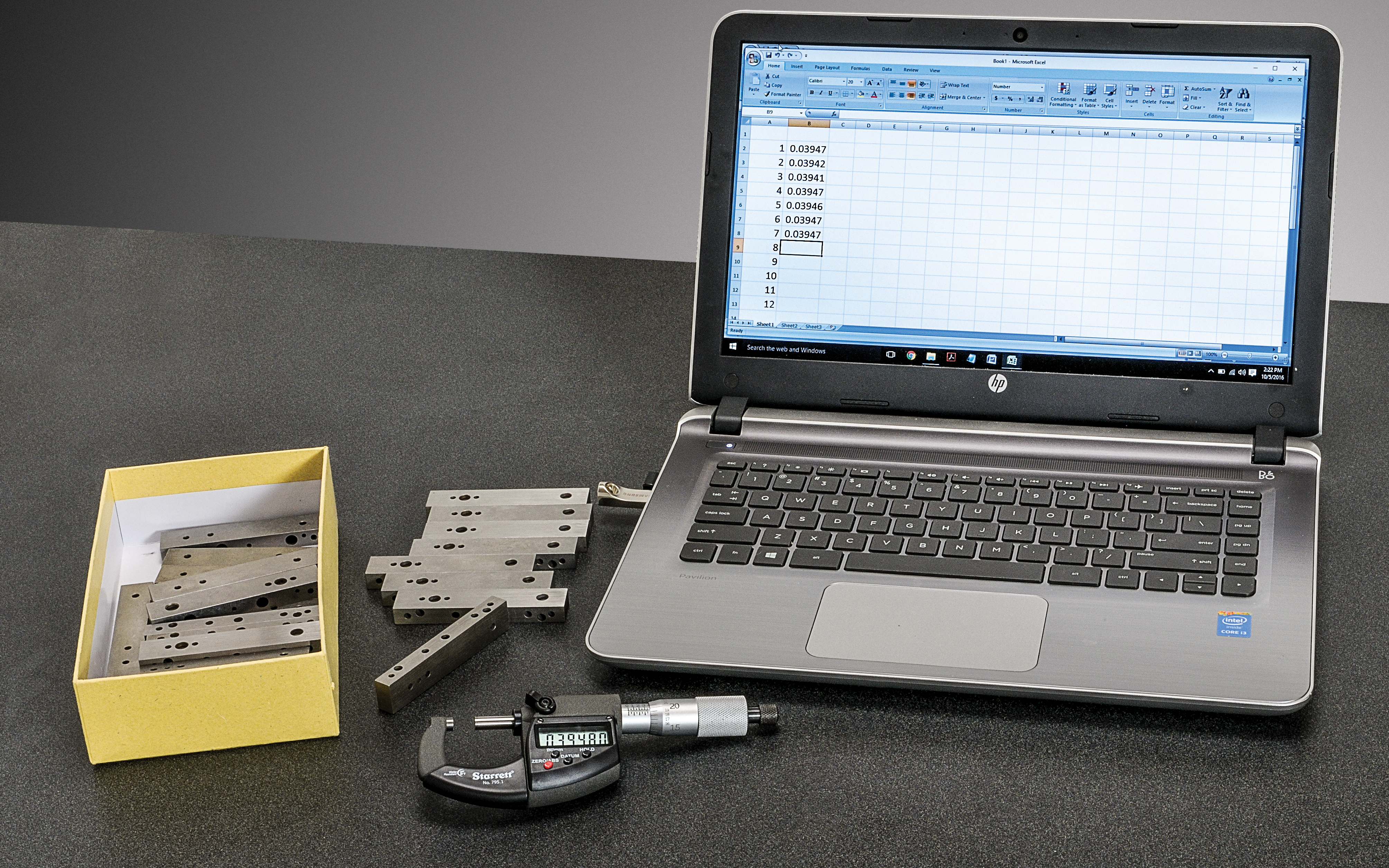 |
Method 3: Measure and Enter Results Directly with a Starrett DataSure® Wireless DCS
Factors affecting accuracy and throughput:
| 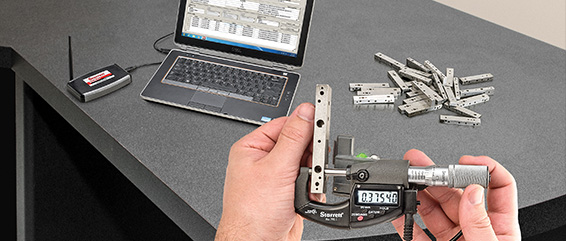 |

